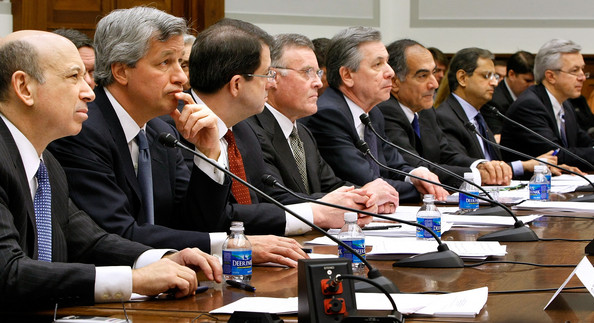Insolvent banks now want to hike dividend payments to shareholders.
Bill Black is having a coronary.
--
The Federal Reserve ordered the 19 largest U.S. banks to test their capital levels against a scenario of renewed recession with unemployment rising above 11 percent, said two people with knowledge of the review.
The banks stress-tested the performance of their loans, securities, earnings, and capital against at least three possible economic outcomes as part of a broader capital-planning exercise. The banks, including some seeking to increase dividends cut during the financial crisis, submitted their plans last month. The Fed will finish its review in March.
“They’re essentially saying, ‘Before you start returning capital to shareholders, let’s make sure banks’ capital bases are strong enough to withstand a double-dip scenario,’ ” said Jonathan Hatcher, a credit strategist specializing in banks at New York-based Jefferies Group Inc. Regulators don’t want to see banks “come crawling back for help later,” he said.
Executives at banks such as JPMorgan Chase & Co. in New York and PNC Financial Services Group Inc. in Pittsburgh have asked regulators for permission to increase dividends. The Fed has told banks that it expects dividends and share buybacks to be “conservative” and allow for “significant accretion of capital,” according to a November notice. Some capital payout plans may be rejected as “inappropriate,” the notice said.
The Fed also wants banks to consider how the Dodd-Frank Act overhauling financial oversight might affect earnings, and how they will meet stricter international capital guidelines, according to the November notice. Banks will also have to consider how many faulty mortgages investors may ask them to take back into their portfolios. Standard & Poor’s Corp. estimates mortgage buybacks could cost the industry as much as $60 billion.
The Fed’s adverse economic scenario included a 1.5 percent decline in gross domestic product from the fourth quarter of last year through the end of 2011, said the people, who declined to be named because the Fed hasn’t made the details of the review public. The scenario assumed growth resumes, with output rising 4 percent over the fourth-quarter 2010 level by the end of 2013. Unemployment would peak at more than 11 percent by the first quarter of 2012 and drop back to 9.5 percent by the end of 2013.
While Fed policy makers want banks to be prepared for a slump, they aren’t predicting one. In January, members of the Federal Open Market Committee forecast growth of 3.4 percent or more annually over the next three years, with the jobless rate falling to 6.8 percent to 7.2 percent in the fourth quarter of 2013. Unemployment averaged 9.6 percent in the final three months of 2010.
Continue reading at Bloomberg...
